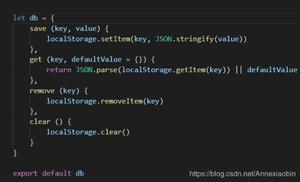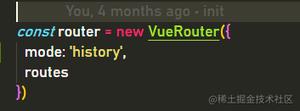React-router5.x 路由的使用及配置

在 React router 中通常使用的组件有三种:
- 路由组件(作为根组件): BrowserRouter(history模式) 和 HashRouter(hash模式)
- 路径匹配组件: Route 和 Switch
- 导航组件: Link 和 NavLink
关于路由组件,如果我们的应用有服务器响应web的请求,建议使用<BrowserRouter>组件; 如果使用静态文件服务器,建议使用<HashRouter>组件
1. 安装
npm install react-router-dom2. 实例
import React, { Component, Fragment } from \'react\';import { Provider } from \'react-redux\';
import { BrowserRouter, Route } from \'react-router-dom\';
import store from \'./store\';
import Header from \'./common/header\';
import Home from \'./pages/home\';
import Detail from \'./pages/detail\';
import Login from \'./pages/login\';
class App extends Component {
render() {
return (
<Provider store={store}>
<Fragment>
<BrowserRouter>
<div>
<Header />
<Route path=\'/\' exact component={Home}></Route>
<Route path=\'/login\' exact component={Login}></Route>
<Route path=\'/detail/:id\' exact component={Detail}></Route>
</div>
</BrowserRouter>
</Fragment>
</Provider>
)
}
}
export default App;
3. 路由组件 BrowserRouter 和 HashRouter
BrowserRouter(history模式) 和 HashRouter(hash模式)作为路由配置的最外层容器,是两种不同的模式,可根据需要选择。
history 模式:
class App extends Component { render() {
return (
<BrowserRouter>
<Header />
<Route path=\'/\' exact component={Home}></Route>
<Route path=\'/login\' exact component={Login}></Route>
<Route path=\'/detail/:id\' exact component={Detail}></Route>
</BrowserRouter>
)
}
}
hash 模式:
class App extends Component { render() {
return (
<HashRouter>
<Header />
<Route path=\'/\' exact component={Home}></Route>
<Route path=\'/login\' exact component={Login}></Route>
<Route path=\'/detail/:id\' exact component={Detail}></Route>
</HashRouter>
)
}
}
4. 路径匹配组件: Route 和 Switch
一、Route: 用来控制路径对应显示的组件
有以下几个参数:
4.1 path:指定路由跳转路径
4.2 exact: 精确匹配路由
4.3 component:路由对应的组件
import About from \'./pages/about\';··· ···
<Route path=\'/about\' exact component={About}></Route>
4.4 render: 通过写render函数返回具体的dom:
<Route path=\'/about\' exact render={() => (<div>about</div>)}></Route>render 也可以直接返回 About 组件,像下面:
<Route path=\'/about\' exact render={() => <About /> }></Route>但是,这样写的好处是,不仅可以通过 render 方法传递 props 属性,并且可以传递自定义属性:
<Route path=\'/about\' exact render={(props) => { return <About {...props} name={\'cedric\'} />
}}></Route>
然后,就可在 About 组件中获取 props 和 name 属性:
componentDidMount() { console.log(this.props)
}
// this.props:
// history: {length: 9, action: "POP", location: {…}, createHref: ƒ, push: ƒ, …}
// location: {pathname: "/home", search: "", hash: "", state: undefined, key: "ad7bco"}
// match: {path: "/home", url: "/home", isExact: true, params: {…}}
// name: "cedric"
render 方法也可用来进行权限认证:
<Route path=\'/user\' exact render={(props) => { // isLogin 从 redux 中拿到, 判断用户是否登录
return isLogin ? <User {...props} name={\'cedric\'} /> : <div>请先登录</div>
}}></Route>
4.5 location: 将 与当前历史记录位置以外的位置相匹配,则此功能在路由过渡动效中非常有用
4.6 sensitive:是否区分路由大小写
4.7 strict: 是否配置路由后面的 \'/\'
二、Switch
渲染与该地址匹配的第一个子节点 <Route> 或者 <Redirect>。
类似于选项卡,只是匹配到第一个路由后,就不再继续匹配:
<Switch> <Route path=\'/home\' component={Home}></Route>
<Route path=\'/login\' component={Login}></Route>
<Route path=\'/detail\' component={detail}></Route>
<Redirect to="/home" from=\'/\' />
</Switch>
// 类似于:
// switch(Route.path) {
// case \'/home\':
// return Home
// case \'/login\':
// return Login
// ··· ···
// }
所以,如果像下面这样:
<Switch> <Route path=\'/home\' component={Home}></Route>
<Route path=\'/login\' component={Login}></Route>
<Route path=\'/detail\' component={detail}></Route>
<Route path=\'/detail/:id\' component={detailId}></Route>
<Redirect to="/home" from=\'/\' />
</Switch>
当路由为/detail/1时,只会访问匹配组件detail, 所以需要在detail路由上加上exact:
<Switch> <Route path=\'/home\' component={Home}></Route>
<Route path=\'/login\' component={Login}></Route>
<Route path=\'/detail\' exact component={detail}></Route>
<Route path=\'/detail/:id\' component={detailId}></Route>
<Redirect to="/home" from=\'/\' />
</Switch>
注意:如果路由 Route 外部包裹 Switch 时,路由匹配到对应的组件后,就不会继续渲染其他组件了。但是如果外部不包裹 Switch 时,所有路由组件会先渲染一遍,然后选择到匹配的路由进行显示。
5. 导航组件: Link 和 NavLink
Link 和 NavLink 都可以用来指定路由跳转,NavLink 的可选参数更多。
Link
两种配置方式:
通过字符串执行跳转路由
<Link to=\'/login\'> <span>登录</span>
</Link>
通过对象指定跳转路由
- pathname: 表示要链接到的路径的字符串。
- search: 表示查询参数的字符串形式。
- hash: 放入网址的 hash,例如 #a-hash。
- state: 状态持续到 location。通常用于隐式传参(埋点),可以用来统计页面来源
<Link to={{ pathname: \'/login\',
search: \'?name=cedric\',
hash: \'#someHash\',
state: { fromWechat: true }
}}>
<span>登录</span>
</Link>
点击链接 进入 Login 页面后,就可以在this.props.location.state中看到 fromWechat: true:
NavLink
可以看做 一个特殊版本的 Link,当它与当前 URL 匹配时,为其渲染元素添加样式属性。
<Link to=\'/login\' activeClassName="selected"> <span>登录</span>
</Link>
<NavLink to="/login"
activeStyle={{
fontWeight: \'bold\',
color: \'red\'
}}
>
<span>登录</span>
</NavLink>
- exact: 如果为 true,则仅在位置完全匹配时才应用 active 的类/样式。
- strict: 当为 true,要考虑位置是否匹配当前的URL时,pathname 尾部的斜线要考虑在内。
- location 接收一个location对象,当url满足这个对象的条件才会跳转
- isActive: 接收一个回调函数,只有当 active 状态变化时才能触发,如果返回false则跳转失败
const oddEvent = (match, location) => { if (!match) {
return false
}
const eventID = parseInt(match.params.eventID)
return !isNaN(eventID) && eventID % 2 === 1
}
<NavLink
to="/login"
isActive={oddEvent}
>login</NavLink>
6. Redirect
<Redirect> 将导航到一个新的地址。即重定向。
<Switch> <Route path=\'/home\' exact component={Home}></Route>
<Route path=\'/login\' exact component={Login}></Route>
<Redirect to="/home" from=\'/\' exact />
</Switch>
上面,当访问路由‘/’时,会直接重定向到‘/home’。
<Redirect> 常在用户是否登录:
class Center extends PureComponent { render() {
const { loginStatus } = this.props;
if (loginStatus) {
return (
<div>个人中心</div>
)
} else {
return <Redirect to=\'/login\' />
}
}
}
也可使用对象形式:
<Redirect to={{
pathname: "/login",
search: "?utm=your+face",
state: { referrer: currentLocation }
}}
/>
7. withRouter
withRouter 可以将一个非路由组件包裹为路由组件,使这个非路由组件也能访问到当前路由的match, location, history对象。
import { withRouter } from \'react-router-dom\';class Detail extends Component {
render() {
··· ···
}
}
const mapStateToProps = (state) => {
return {
··· ···
}
}
const mapDispatchToProps = (dispatch) => {
return {
··· ···
}
}
export default connect(mapStateToProps, mapDispatchToProps)(withRouter(Detail));
8. 编程式导航 - history 对象
例如,点击img进入登录页:
class Home extends PureComponent { goHome = () => {
console.log(this.props);
this.props.history.push({
pathname: \'/login\',
state: {
identityId: 1
}
})
}
render() {
return (
<img className=\'banner-img\' alt=\'\' src="img.png" onClick={this.goHome} />
)
}
}
history 对象通常会具有以下属性和方法:
length - (number 类型) history 堆栈的条目数action - (string 类型) 当前的操作(PUSH, REPLACE, POP)
location - (object 类型) 当前的位置。location 会具有以下属性:
pathname - (string 类型) URL 路径
search - (string 类型) URL 中的查询字符串
hash - (string 类型) URL 的哈希片段
state - (object 类型) 提供给例如使用 push(path, state) 操作将 location 放入堆栈时的特定 location 状态。只在浏览器和内存历史中可用。
push(path, [state]) - (function 类型) 在 history 堆栈添加一个新条目
replace(path, [state]) - (function 类型) 替换在 history 堆栈中的当前条目
go(n) - (function 类型) 将 history 堆栈中的指针调整 n
goBack() - (function 类型) 等同于 go(-1)
goForward() - (function 类型) 等同于 go(1)
block(prompt) - (function 类型) 阻止跳转。
注意,只有通过 Route 组件渲染的组件,才能在 this.props 上找到 history 对象
所以,如果想在路由组件的子组件中使用 history ,需要使用 withRouter 包裹:
import React, { PureComponent } from \'react\';import { withRouter } from \'react-router-dom\';
class 子组件 extends PureComponent {
goHome = () => {
this.props.history.push(\'/home\')
}
render() {
console.log(this.props)
return (
<div onClick={this.goHome}>子组件</div>
)
}
}
export default withRouter(子组件);
9. 路由过渡动画
import { TransitionGroup, CSSTransition } from "react-transition-group";class App extends Component {
render() {
return (
<Provider store={store}>
<Fragment>
<BrowserRouter>
<div>
<Header />
{/* 最外部的<Route></Route>不进行任何路由匹配,仅仅是用来传递 location */}
<Route render={({location}) => {
console.log(location);
return (
<TransitionGroup>
<CSSTransition
key={location.key}
classNames=\'fade\'
timeout={300}
>
<Switch>
<Redirect exact from=\'/\' to=\'/home\' />
<Route path=\'/home\' exact component={Home}></Route>
<Route path=\'/login\' exact component={Login}></Route>
<Route path=\'/write\' exact component={Write}></Route>
<Route path=\'/detail/:id\' exact component={Detail}></Route>
<Route render={() => <div>Not Found</div>} />
</Switch>
</CSSTransition>
</TransitionGroup>
)
}}>
</Route>
</div>
</BrowserRouter>
</Fragment>
</Provider>
)
}
}
.fade-enter { opacity: 0;
z-index: 1;
}
.fade-enter.fade-enter-active {
opacity: 1;
transition: opacity 300ms ease-in;
}
10. 打包部署的路由配置
项目执行npm run build后,将打包后的build文件当大 Nginx 配置中。
如果 react-router 路由 使用了 history 模式(即<BrowserRouter>),那么在 Nginx 配置中必须加上:
location / { ··· ···
try_files $uri /index.html;
··· ···
}
}
如果 react-router 路由 使用了 hash 模式(即<HashRouter>),那么在 Nginx 中不需要上面的配置。
以上是 React-router5.x 路由的使用及配置 的全部内容, 来源链接: utcz.com/z/383029.html






